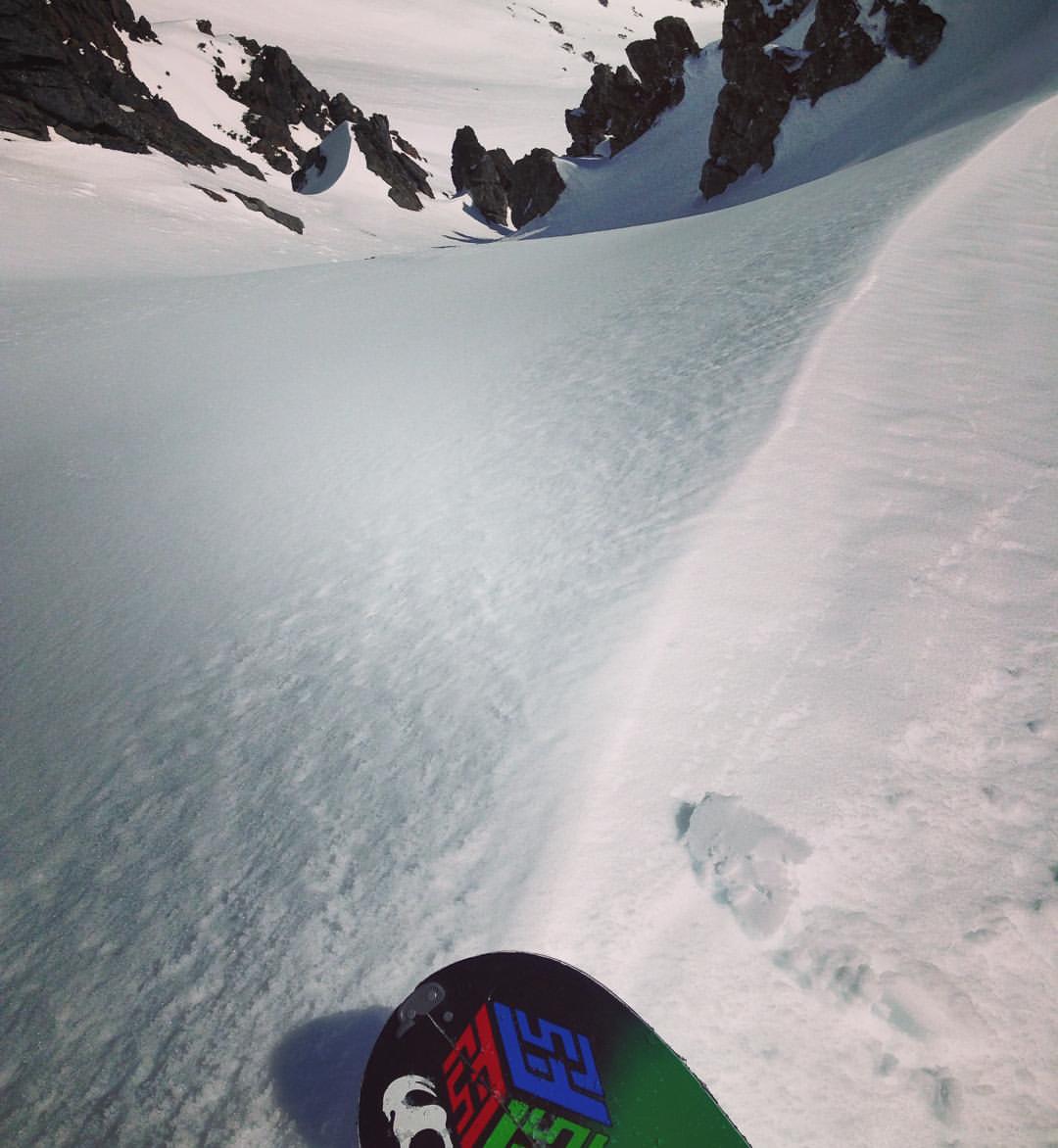|
Some info from Snow Safety australia friend Anthony Von Chrismar
A pre-drop shot from a few years back, and a memorable one that led to barely holding an edge on beyond boiler plate ice, in an un-scoped line, arrested by a scantly penetrated axe and delicately transferring to crampons - a scenario that's been played out by others, I'm sure, and one that you can only learn from. This kind of thing happens with freeriding and you have to be prepared for it. The terrain in Australia may not have the consequence of close out bluffs and countless vertical below you, but a lost edge on an icey face in the main range can quickly lead to a major incident. A conversation with Adam West from MRBC the other day brought up the topic of rescues on the main range - the facts came out that, despite being an embarrassing event, an emergency response from SES may not be as quick as you think...you may be out there over night and fatigue, dehydration and hypothermia gets real very quickly on the main range. What that means is, you can't rely on others, you need to educate yourself and you need to be prepared. There's a bunch of other things to think about when riding more technical terrain. Aside from the usual: do I have a map/GPS?... do I know where I am?... does anyone know I'm here?..what's my emergency response plan/PLB?...how accessible is my PLB?... evaluation of snow/ice on different aspects read during the approach?..do I have the energy?...what's the group dynamics?...do I have time to drop this line?..., Entering a line in technical terrain requires consideration of: the snow pack stability/condition and therefore how do I ride it?....where's the exposure?....where's the safe zone?....if it's icey and you're a boarder is it likely to be a heel or toe edge that will give and require self arrest ?..and therefore how do I hold the ice axe for maximum efficacy for self arrest?.. are my crampons accessible?... how do I even transition to crampons on a 35-40 degree face when I've got one hand on an axe that can barely penetrate the ice and an edge that could slip at any point?...can I build an anchor? These and more are all aspects to consider to stay safe out there, especially if pushing your riding/skiing in more technical and remote terrain where it's really just comes down to your decisions.
0 Comments
Leave a Reply. |
Archives
March 2022
AuthorSnow Safety Australia is a NSW based information website. Categories |
Training Courses |
Company |
|


 RSS Feed
RSS Feed